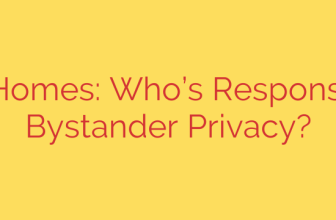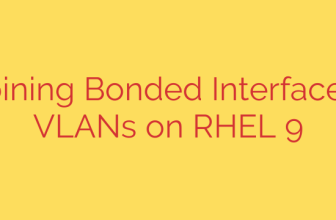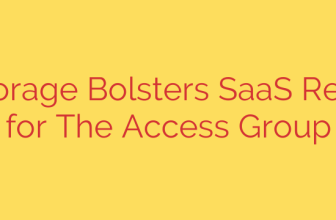
Elevating Your SAP Security Posture: Key Enhancements to Protect Your Core Business Applications
In today’s complex cyber landscape, securing business-critical applications like SAP is no longer a niche concern—it’s a fundamental pillar of enterprise security. As organizations increasingly rely on these systems to manage everything from finance to supply chain, the attack surface expands, attracting sophisticated threats. Traditional security tools often lack the specific context to understand and defend against SAP-focused attacks, creating dangerous blind spots.
Fortunately, the technology designed to protect these vital systems is evolving. Recent advancements are delivering powerful new capabilities that empower security teams to gain deeper visibility, automate defenses, and proactively protect their most valuable data. Let’s explore the key enhancements that are redefining what it means to secure the digital core of your business.
Closing the Network Visibility Gap
One of the most persistent challenges in cybersecurity has been the disconnect between network security teams and application security teams. Network operations centers (NOCs) and security operations centers (SOCs) use powerful tools like Intrusion Detection and Prevention Systems (IDS/IPS) to monitor network traffic for threats. However, these tools typically cannot decipher the proprietary protocols used by SAP, rendering them blind to malicious activity targeting the application layer.
This is a critical vulnerability that attackers can exploit. To address this, new specialized network detection capabilities are emerging. These solutions provide network security appliances with the intelligence needed to identify SAP-specific attack signatures and anomalous behavior in real-time.
This provides network security teams with unprecedented visibility into potential breaches targeting SAP systems, effectively closing a critical security gap between network and application monitoring. By integrating SAP threat intelligence directly into the network security stack, organizations can detect and block attacks before they reach their intended target.
- Security Tip: Audit your current network monitoring tools to determine if they have visibility into SAP-specific protocols like DIAG. If not, explore solutions that can enrich your existing IDS/IPS or firewalls with application-aware threat intelligence.
Securing the Cloud Transformation with SAP BTP Protection
As businesses embrace digital transformation, many are leveraging the SAP Business Technology Platform (BTP) to build and extend applications in the cloud. While BTP offers incredible agility and innovation, it also introduces new security considerations. Custom-built applications and integrations on this platform can contain vulnerabilities if not developed and deployed with a security-first mindset.
To meet this challenge, comprehensive security platforms are extending their reach to provide continuous monitoring and vulnerability assessment for the SAP BTP environment. This ensures that as your organization innovates, your security posture remains strong and compliant.
Organizations can now ensure their cloud-based SAP applications and extensions are developed and operated securely, maintaining compliance and preventing data exposure. This “shift-left” approach integrates security into the development lifecycle, identifying and remediating code vulnerabilities before they can be exploited in a live environment.
From Reactive to Proactive: The Power of Integrated Threat Intelligence
Being inundated with thousands of potential vulnerabilities is a common problem for security teams. Without proper context, it’s nearly impossible to know which threats pose a genuine, immediate risk to the business. This is where actionable, integrated threat intelligence becomes a game-changer.
Modern SAP security solutions are now powered by dedicated research labs that constantly analyze the threat landscape, identify new attack vectors, and discover zero-day vulnerabilities. This intelligence is fed directly back into the security platform, enriching the data and providing critical context.
This allows teams to prioritize patching and mitigation efforts on the most critical threats, focusing resources where they will have the greatest impact and reducing the risk of a breach. Instead of working through a massive backlog of low-risk issues, teams can confidently address the vulnerabilities that are actively being targeted by attackers.
- Security Tip: Implement a risk-based vulnerability management program. Focus first on patching vulnerabilities that are known to be exploitable and have a high potential impact on your critical business processes.
Automating Your Defenses Through Seamless Integration
In the past, SAP security often operated in a silo, disconnected from the broader enterprise security ecosystem. This manual, disjointed approach leads to slow response times and an incomplete view of an organization’s overall risk posture.
The latest advancements address this head-on with robust integrations into existing security tools like Security Information and Event Management (SIEM) and Security Orchestration, Automation, and Response (SOAR) platforms. By automatically feeding critical SAP security alerts and events into a central system like Splunk, IBM QRadar, or Microsoft Sentinel, security teams can correlate data from across the enterprise.
This integration automates the flow of critical SAP threat data into the central SOC, enabling faster incident response and a more unified security posture across the entire enterprise. When a threat is detected, automated playbooks can be triggered, dramatically reducing the time from detection to remediation.
Protecting your SAP landscape requires a modern, integrated, and intelligent approach. By leveraging these key enhancements, your organization can move beyond a reactive stance and build a proactive security program that truly defends the applications at the heart of your business.
Source: https://www.helpnetsecurity.com/2025/09/25/onapsis-platform-enhancements/








